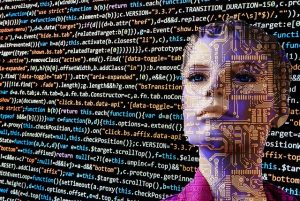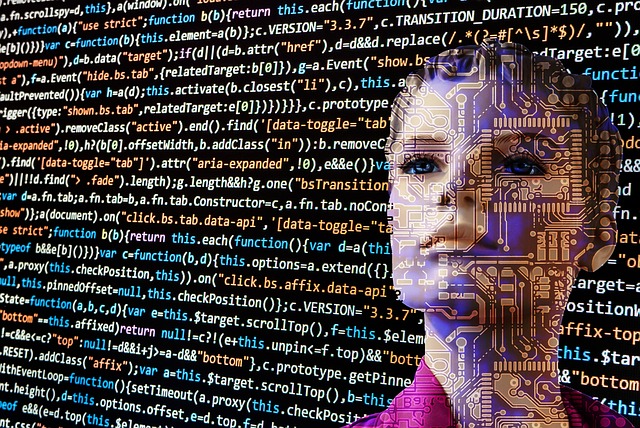 It’s no secret that many industries have already felt the impact of automation. There are some truly inspirational and wonderful applications of new technology in healthcare, transportation, security, entertainment and media, among others. There’s so much that we don’t know, either. That uncertainty has been unsettling, to say the least. At some point, each one of us has thought, “How will AI impact my job?”
It’s no secret that many industries have already felt the impact of automation. There are some truly inspirational and wonderful applications of new technology in healthcare, transportation, security, entertainment and media, among others. There’s so much that we don’t know, either. That uncertainty has been unsettling, to say the least. At some point, each one of us has thought, “How will AI impact my job?”
It’s natural. Progress is being made at incredible speed and it’s only a matter of time before people working in finance, marketing, human resources, legal, and education are faced with the reality that some aspects of their work might become more automated in the future.
However, as Forrester’s predictions for 2018 notes, over 60 percent of executives say their organisation is behind regarding digital transformation. The report also notes that, as AI becomes more ingrained in the corporate world, people with highly specialized skills as data scientists and software developers will want to work for companies further along their digital transformation journey – making it more difficult for companies struggling to adjust to these new realities to attract and retain top talent.
Before all of this can make a real impact, organisations need to be culturally ready. Culture is what drives readiness and change; not technology. In fact, Forrester’s report cautions that many AI-related projects in 2018 – up to 75 percent – will “underwhelm because they fail to model operational considerations, causing business leaders to reset the scope of AI investments.” In other words, a lot has to be done right in order for new technology to have a lasting, positive impact on people and the business. The important of cultural readiness and acceptance can’t be overstated.
What’s important for L&D professionals at this point in time, as Larry Boyer explains in Forbes, is to do what they can to assist others embrace digital transformation by helping people understand, prepare for, and adapt to the “direct and indirect” impact of automation on their jobs and responsibilities. After all, we’re more likely to live in a world where technology is used to enhance how people do their work – to make it easier, faster, and improve quality.
This means being more proactive than ever to help people develop their skills and learn new ones as needs change – something that’s at the very heart of creating an organisational learning mindset when it comes to digital transformation. The good news is the numbers show people want to. PWC’s Workforce of the Future report found that 74 per cent of respondents said they are ready to learn new skills or re-train to remain employable in the future.
Let’s look at three ways L&D professionals can assess the impact of AI on employees and help them prepare to take the right next step.
- Assess and project skill requirements: A centralized HR system that holds job descriptions, employee profiles, tracks one-on-one meetings, goals and performance can really make the job of L&D easier. Benchmarking this data against current business needs will help provide a critical look at what skills are needed in the short, medium, and long term. There are critical questions to ask, such as: How will an employee’s core responsibilities change? What technology will they need to know? What areas of the business can they contribute to with the skills they have?
Having this big picture view of where people in critical roles stand in terms of skills, and what will be needed in the future, is important for L&D to keep resources and learning tools up to date and valuable.
- Re-evaluate resources and encourage open learning: Once you know which skills employees have and which ones will be needed in the future, you can start to compile essential resources and learning tools that will help employees cross train and develop. L&D departments are well on their way to becoming an education and development enabler for people and teams, providing quick and easy access and recognition for many forms of learning.
Results from the 6th annual Learning in the Workplace Survey showed that this self-serve type of learning is what is most valued. Employees ranked different learning formats in order of usefulness and put daily work experiences, knowledge sharing with teams, web search and the use of web resources at the top of the list. Classroom training and e-Learning – which has traditionally been the focus of L&D — dropped to the bottom of the list.
- Embrace new forms of technology
Bersin’s 2018 HR Technology Disruptions highlights the use of virtual and augmented reality in corporate learning. These new types of learning experiences, in addition to formal and informal learning, present L&D professionals with seemingly endless opportunities to help create highly skilled workforces with the help of new technology such as wearable devices.
The application of this new technology can provide employees with a different and perhaps more enjoyable twist on learning. Think of when you’ve been able to use a new tool or software to help you learn or get something done. It may be daunting at first, but with practice and time, that technology becomes valuable and can result in faster learning and the retention of knowledge.
Recognize the impact and act on it
We live more intimately with technology than ever before. At the end of the day, it’s made our lives easier. We can order a ride, our groceries, shop for essential items – all with a few taps on our smart phone. What’s even better is that systems learn about our preferences and can even nudge us when it might be time to stock up on. And these same types of interactions and connectedness is happening at work. While digital transformation is important, we can’t forget about the fact that culture underlies everything in business. Without a culture that’s ready to embrace digitalisation, to help remove barriers for people so they find success at all stages of their career, change will be difficult to manage.
Companies are learning how to adapt to the advancements, diversity and challenges it brings to their business. Our systems are so intelligent that they are constantly learning and picking up information to help us work better, learn faster, collaborate and share information and files with people easily and more securely than ever before.
L&D needs to recognize the impact — and the perceived impact — technology and AI in particular has and will continue to have on employees. In order to help them to be top performers, we need to ensure organisational culture is ready, establish policies and practices to support digital transformation, and embrace technology that will help them get there.
Christian Foerg
Latest posts by Christian Foerg (see all)
- The impact of AI on employees and L&D - 16 January 2018
